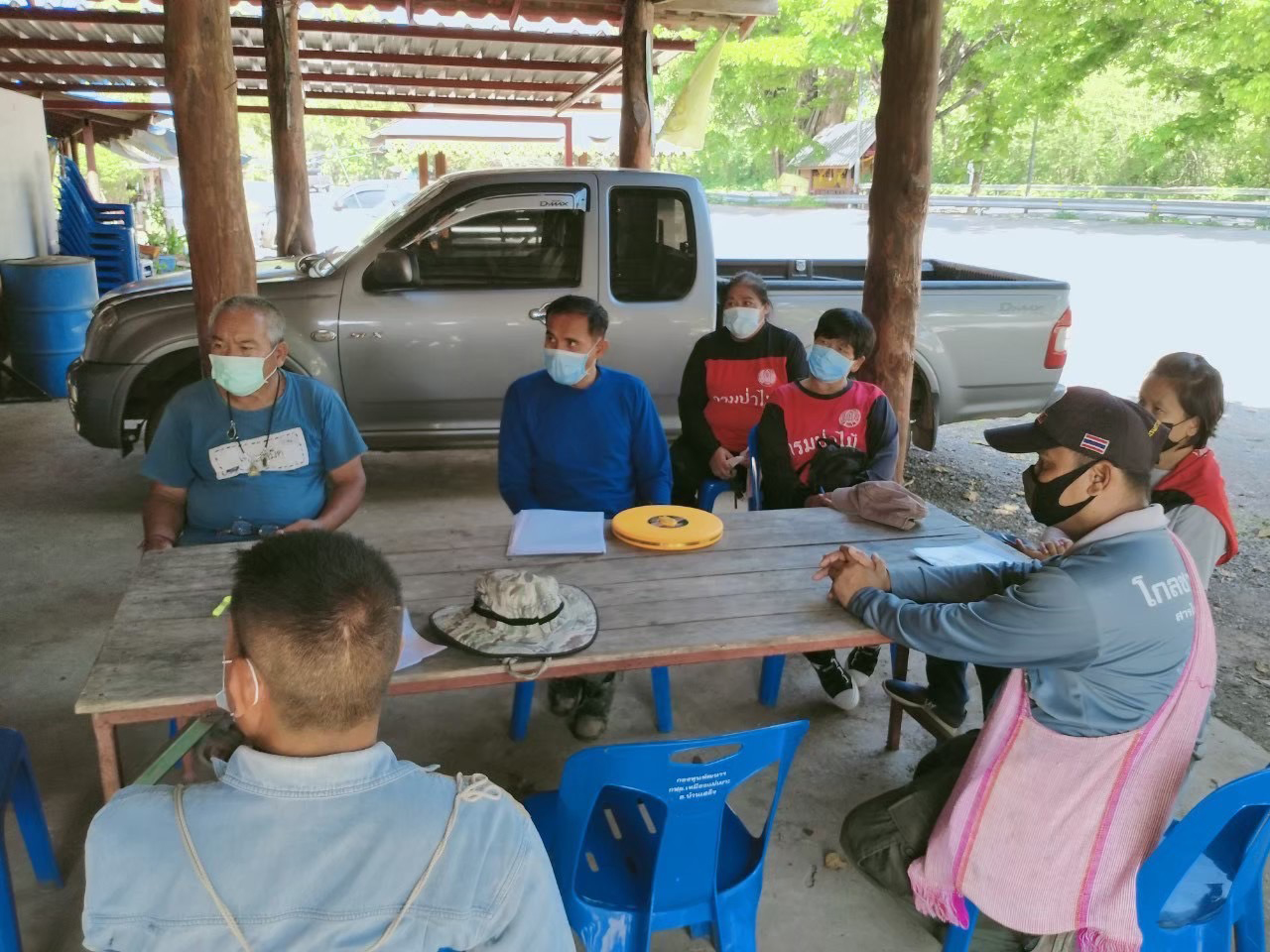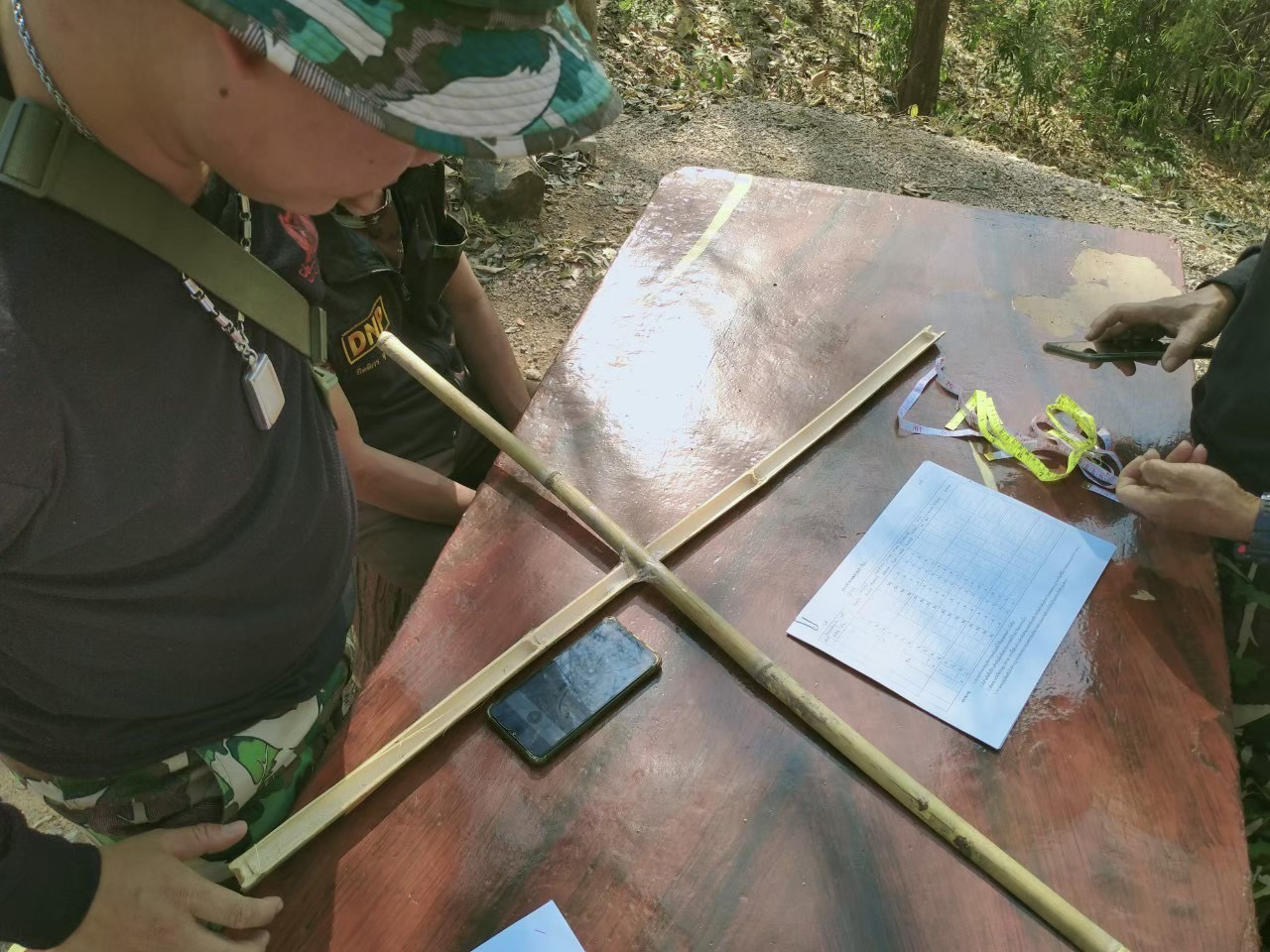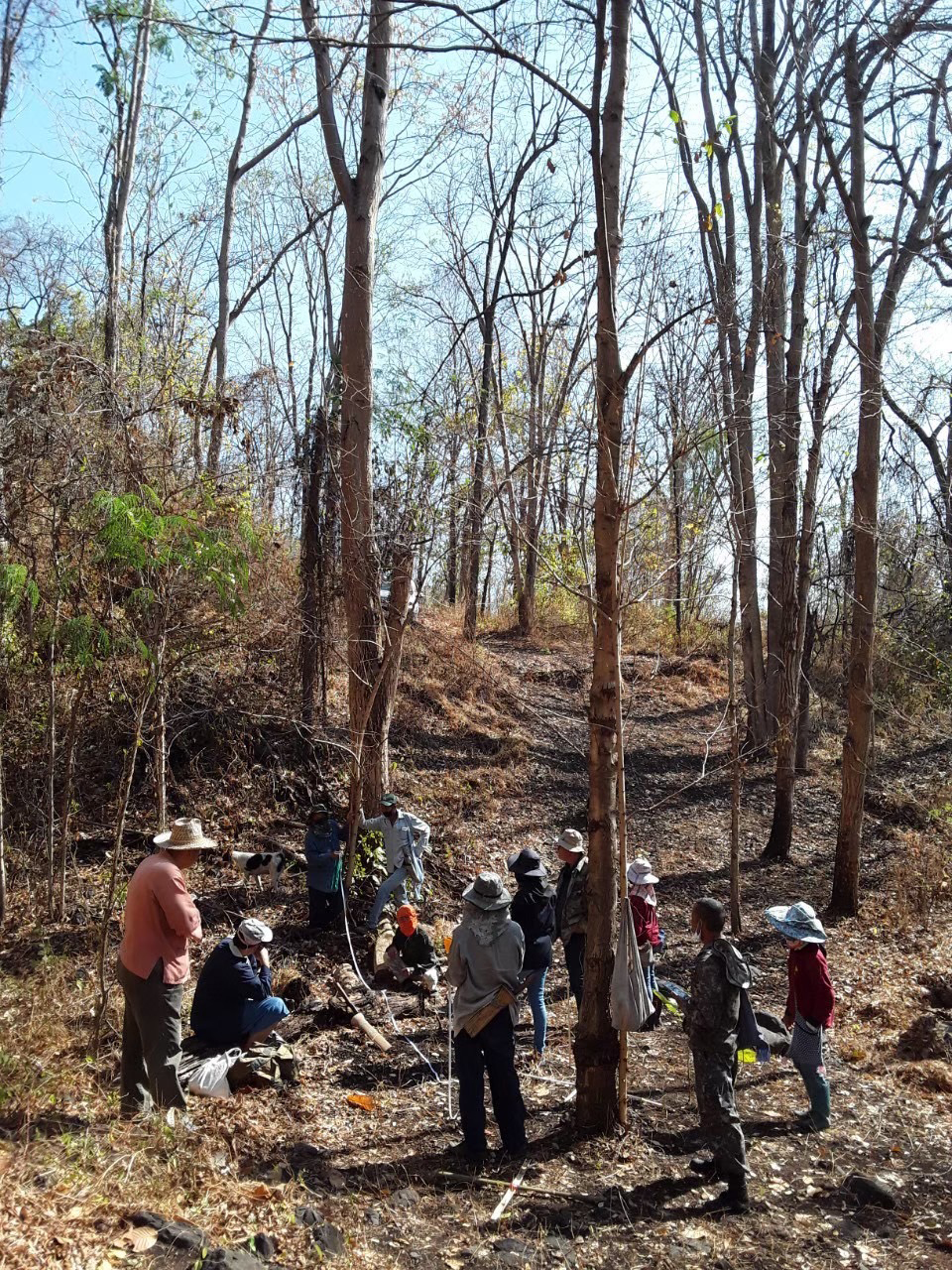A study on reducing the occurrence and spread of forest fires according to the Civil State Forest Guidelines in Doi Phra Bat, Lampamg Province)
- Dr. Boriboon Boonyuhong
- Dr. Sawai Wanghongsa
- Mr. Chan Uthiya
- Miss Duangporn Kiatdamrong
Description
MU-SDGs Case Study Content
One of Thailand's significant national issues is the impact of fine dust particles, particularly PM 2.5. In the region surrounding Doi Phra Bat, Lampang Province, the primary cause of small dust particles is attributed to forest fires. This research is focused on identifying the causes and addressing the issue of fires in forest areas resulting from human activities. It also aims to discover methods to restore forests and mitigate the prevalence of forest fires in the Doi Phra Bat area, Lampang Province, employing a participatory approach in line with the Pracharat framework. The research objectives are as follows:
1) To Identify the motivations behind fires in reserved and protected forests
2) To determine motivations, criteria, and methods to foster collaboration among local communities in the Doi Phrabat area, enabling cooperation with the government for natural resource and environmental conservation
3) To explore strategies for restoring forests that align with the ecosystem around Doi Phra Bat
4) To establish a Pracharath Forest Network to collectively safeguard natural resources and the environment in the forest area surrounding His Majesty's footprint sustainably
Operation
The research methods involve surveys and interviews to gather information on the characteristics and composition of community forests and natural forests. Data collection includes surveying plant communities and density using the Point-Centered Quarter Method (PCQM). This method involves establishing a system of randomly selected points through systematic sampling, dividing the area into four parts around the random points, and drawing intersecting perpendicular lines. The distance from the random point to the nearest tree in each quarter is measured, considering the center of the tree. The recorded data includes the name of the measured plant species along with the diameter at breast height (DBH) at 1.30 meters. Interviews are conducted with senior scholars in the community and 148 community leaders in the Doi Phrabat forest area, encompassing communities in all 36 villages. The determination of the sample population follows Yamane's (1973) equation. Data processing involves descriptive data analysis and statistical analysis of each community forest, organized according to essential information points. This includes a comparison of the conditions of community forests and a juxtaposition with natural forests to provide guidelines for restoring moisture in community forests.
Outcome
The primary causes of forest fires in the Doi Phra Bat region are hunting and the collection of forest products, which are integral aspects of the local way of life. To address this issue, measures have been implemented, including the establishment of strict community rules, imposition of a burning ban, delineation of area boundaries between villages and sub-districts, and demarcation of boundaries between arable land and forest areas. Law enforcement is rigorously applied, along with providing knowledge and understanding to the local population. Additionally, networks such as the Doi Phra Bat Forest Restoration and Conservation Network and the Pracharat Forest Network have been created to reduce problems and connect ideas from various sectors for solving forest fire issues, as well as addressing dust and smoke problems. The study on forest social characteristics revealed that out of a total of 167 tree species, 98 were deciduous trees (58.33%), 36 were semi-deciduous (21.43%), 26 were evergreen (15.48%), and 8 could not be identified (4.76%). The proportion of deciduous, semi-deciduous, and evergreen trees is 64.62%, 31.99%, and 3.38%, respectively. Forest restructuring involves restoring the ecological functions of the Doi Phra Bat forest by planting trees native to the area. The primary focus is on eight suitable deciduous tree species: Ko, Kom, wild khoi, bile, ebony, wild mango, santao, and wa. These trees serve as food for wild animals, aiding in the natural dispersal of seeds.
Utilization
Based on the study results, the research team has compiled two Pracharat forest guidelines as follows:
1) Guidelines for solving problems in the initial stages:
- Determining burning prohibition days in alignment with the average rainfall and the number of rainy days each month.
- Clearly defining boundaries between villages and subdistricts to facilitate management and prevent forest fires and smoke
- Establishing boundaries or zoning for each household, such as distinguishing between farming areas and usable forest areas
- Issuing community rules as a framework and guideline
- Collecting data on forest products
- Facilitating continuous exchange forums among stakeholders in the community.
- Developing occupational skills for community members
- Enforcing laws by government officials
- Establishing network partners and organizing ongoing exchange forums
2) Guidelines for solving long-term problems:
- Creating knowledge and understanding by establishing a platform for exchanging knowledge to foster initial understanding
- Implementing forest restructuring through the planting of deciduous trees.
- Establishing networks
Differences or uniqueness that is different from other projects
There are guidelines for reducing forest fires, as well as for the long-term restoration and preservation of the Doi Phra Bat forest. These guidelines aim to foster cooperation through networks of people in the area.
Impacts at the community, country, and global levels
Community, village, area surrounding Doi Phrabat, Lampang Province
Key Message
Measures to solve the problem include issuing strict community rules, implementing a ban on burning, dividing area boundaries between villages and sub-districts, including the boundary between arable land and forest area. Strict law enforcement is accompanied by providing knowledge and understanding for people in the area and creating networks to reduce problems.
สอดคล้องกับยุทธศาสตร์มหาวิทยาลัย
Partners/Stakeholders
Khelang Banphot National Park
ภาพประกอบ








